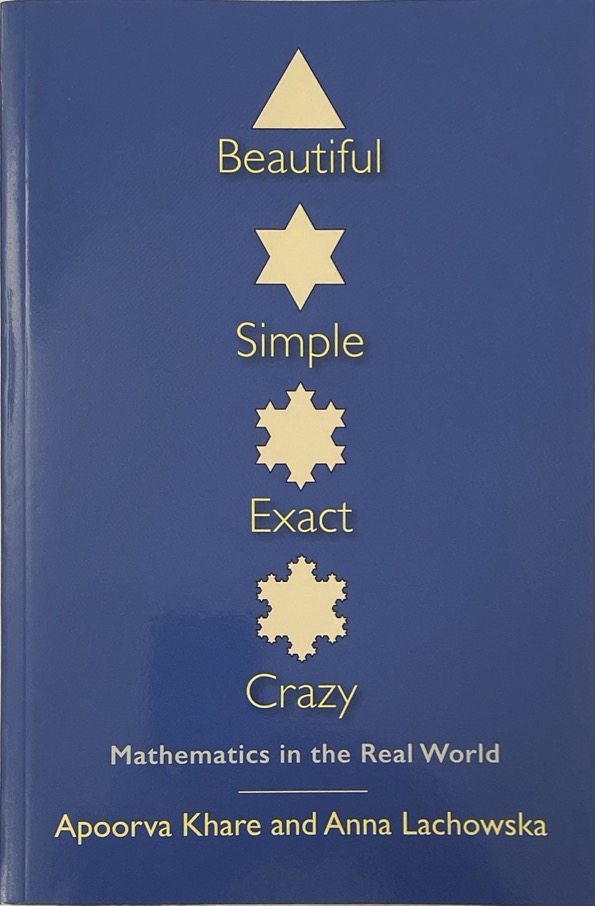A. Khare, A.Lachowska, Beautiful, Simple, Exact, Crazy: Mathematics in the Real World, Yale University Press, 2015.
The idea for this book arose out of an introductory mathematics course,
``Mathematics in the Real World", that Apoorva and I co-designed and
have taught at Yale and Stanford. The purpose of the course is to
familiarize students whose primary interests lie outside of the sciences
with the power and beauty of mathematics.
The book is intended, in particular, for "artists and poets", so we
included several references to works of literature and art. Chapter 2
contains a mathematical analysis of a short story by an
Italian writer, Dino Buzzati, which is based on the repeated application of
a constant speed motion model. A mathematical perspective on the
development of music scales is given in Chapter 7. The
mathematical concept of a logarithm can be used to illustrate our
egocentricity: a famous New Yorker cover by S.Steinberg, View
of the World from 9th Avenue, can be interpreted as a logarithmic
scale of distances. In connection with the radiocarbon dating method
(Chapter 8), we discuss some of the mysteries of the famous
Voynich manuscript, an undeciphered early fifteenth-century text whose
author, language, and subject remain unknown. In Chapter 10 we discuss application of fractal geometry in archaeology, when the scale of the development of civilization in the region of Dahshur (Egypt) was determined with the help of purely mathematical methods.
While working on the book I started collecting the instances of applications of mathematics in humanities that go beyond statistical analysis. Below are some of the examples that didn't get included in the book. I'll be happy to hear of any other examples you might know.
- Fourier analysis and wavelets in analyzing the authenticity of artwork
- Mathematics-inspired fashion design

